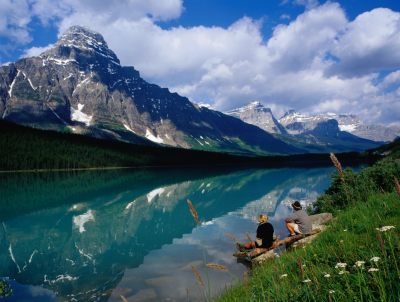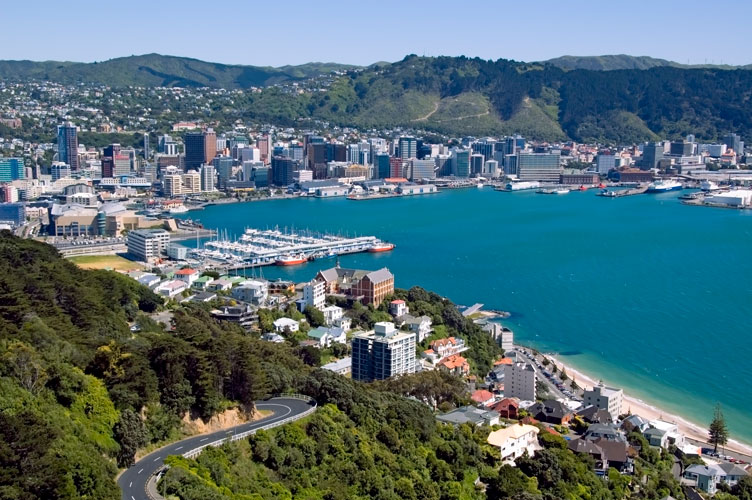- Study in AustraliaAustralian Universities/CollegesPrograms by faculty AusAustralian VisasLife in Australia
- Study In New ZealandNew Zealand UniversitiesPrograms by Faculty NZNew Zealand VisasLife in New Zealand
- Study in CanadaUniversities/Colleges in CANADAPrograms by faculty CanadaCanadian VisasLife in Canada
General Information
New Zealand General Information
New Zealand lies in the south west Pacific Ocean, nearly 2 000 kms from Australia, to the east, and 19 017 kms, or 11 790 miles from Paris, France. New Zealand is over 1.600 kilometres long, and its widest part is 450 kilometres. The total land area is around 270 550 square kilometres, with approximately 10 000 kilometres of coastline.
The capital city is Wellington, near the southern tip of the North Island, with a population of approximately 360 000 (although probably over this figure by now). Wellington's central geographical position was the major deciding factor in the transfer of the seat of government from Auckland, in 1865. Auckland is the largest city with a population having just reached one million. Over 200 000 inhabitants of Auckland are from the Pacific islands, which makes Auckland the largest Polynesian city in the world.
The total population of New Zealand is 3.9 million, and is predicted to reach 4.6 million within the next 44 years. Māori make up about 15% of the population, and are the indigenous people of New Zealand. Most Māori live in the North Island areas of Northland, Auckland city, the Bay of Plenty and the Waikato.
Sovereign: Queen Elizabeth II (1952)
Governor-General: Anand Satyanand (2006)
Prime Minister: John Key (2008)
Land area: 103,734 sq mi (268,671 sq km);
Total area: 103,737 sq mi (268,680 sq km)
Population (2010 est.): 4,252,277 (growth rate: 0.9%); birth rate: 13.8/1000; infant mortality rate: 4.8/1000; life expectancy: 80.5; density per sq km: 15
Capital: Wellington, 342,500 (metro. area), 165,100 (city proper)
Largest cities: Auckland, 369,300 (metro. area), 359,500 (city proper); Christchurch, 334,100
Monetary unit: New Zealand dollar
Climate
Southern termperate zone. Neither excessively hot nor cold. Raincoat essential. Warm clothing suitable most of year. Seasons reversed from N. Hemisphere.
Major Cities
Population Longitude Code -------------------------------------------------------------------------- Wellington 360,000 41.17S,174.47E 4 Auckland 890,000 36.52S,174.46E 9 Christchurch 335,000 43.33S,172.40E 3 Hamilton 170,000 37.46S,175.18E 7 Dunedin 115,000 45.52S,170.30E 3
Geography
New Zealand, about 1,250 mi (2,012 km) southeast of Australia, consists of two main islands and a number of smaller outlying islands so scattered that they range from the tropical to the antarctic. The country is the size of Colorado. New Zealand's two main components are the North Island and the South Island, separated by Cook Strait. The North Island (44,281 sq mi; 115,777 sq km) is 515 mi (829 km) long and volcanic in its south-central part. This area contains many hot springs and beautiful geysers. South Island (58,093 sq mi; 151,215 sq km) has the Southern Alps along its west coast, with Mount Cook (12,316 ft; 3754 m) the highest point. Other inhabited islands include Stewart Island, the Chatham Islands, and Great Barrier Island. The largest of the uninhabited outlying islands are the Auckland Islands (234 sq mi; 606 sq km), Campbell Island (44 sq mi; 114 sq km), the Antipodes Islands (24 sq mi; 62 sq km), and the Kermadec Islands (13 sq mi; 34 sq km).

Government
Parliamentary democracy.
History
Maoris were the first inhabitants of New Zealand, arriving on the islands in about 1000. Maori oral history maintains that the Maoris came to the island in seven canoes from other parts of Polynesia. In 1642, New Zealand was explored by Abel Tasman, a Dutch navigator. British captain James Cook made three voyages to the islands, beginning in 1769. Britain formally annexed the islands in 1840. The Treaty of Waitangi (Feb. 6, 1840) between the British and several Maori tribes promised to protect Maori land if the Maoris recognized British rule. Encroachment by British settlers was relentless, however, and skirmishes between the two groups intensified.
Instituting Social Welfare
From the outset, the country has been in the forefront of social welfare legislation. New Zealand was the world's first country to give women the right to vote (1893). It adopted old-age pensions (1898); a national child welfare program (1907); social security for the elderly, widows, and orphans, along with family benefit payments; minimum wages; a 40-hour workweek and unemployment and health insurance (1938); and socialized medicine (1941).
New Zealand fought with the Allies in both world wars as well as in Korea. In 1999, it became part of the UN peacekeeping force sent to East Timor. In recent years, New Zealand has introduced extremely liberal social policies. In June 2003, Parliament legalized prostitution and in Dec. 2004, same-sex unions were recognized. In 2005, Helen Clark was elected for the second time. She lost her reelection bid in 2008, when the center-right National Party, led by John Key, took 45.5% of the vote in parliamentary elections. Clark's Labour Party garnered 33.8%. Key became prime minister in November. Key's win ended nine years of governance by the Labour Party.
For more information, please contact one of our offices
Study in Australia | Study in the UK | Study in Malaysia | Study in Canada | Study in the USA | Study in New Zealand














